Tiermes (Spain): A Roman City Carved in Stone
By Leonard A. Curchin
Throughout the Roman Empire, architecture adapted itself to local conditions and materials. Rarely does such adaptation take a more curious form that at Tiermes in northern Spain. The local geography consists of red sandstone hills, with grass and scrub suitable for pasturing sheep, but no trees of substantial size. This shortage of timber, combined with an abundance of relatively soft rock, dictated the architectural strategy for the Roman town constructed here. Houses were carved into the living rock, with wooden beams used only to support the second storey and the roof (figure 1). In addition to solving the problem of building materials, the rock provided good insulation on a site where the temperature can be very hot in summer, and often falls below freezing in winter. The south side of the cliffs was dug into to form the north wall of the houses, and the remaining walls were built out with stone blocks. The doors of the houses faced south, to avoid the cold north wind and to let in maximum sunlight.
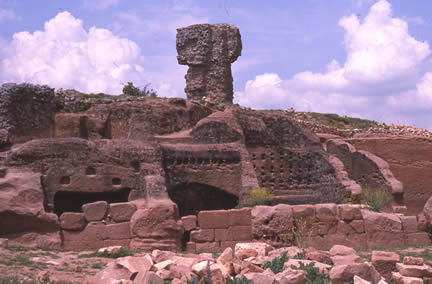
Figure 1
Although 2,000 years of erosion have inevitably damaged the buildings, the visitor to Tiermes can still see standing walls, carved from the rock or built from masonry (figure 2), as well as the square holes which once held the roof beams. The houses consisted of two storeys plus a cellar. Some of them have a staircase on one side, with slots for wooden steps. On the north wall, a doorway cut led into a storeroom cut completely out of the rock. Channels cut in the floor provided drainage. Some homes include a rock-cut bench along one wall, and there is evidence for windows and hearths.
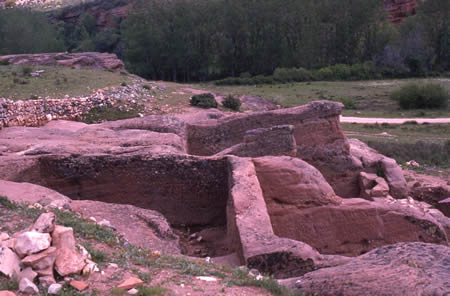
Figure 2
The richer homes had mosaic floors and beautiful wall paintings depicting birds and plants in vivid colours, but these survive only in fragments. One of these houses has 35 rooms, including two atriums, each with an impluvium or pool (figure 3). Unexcavated dwellings on the south-west side of the town are marked by multiple rows of beam-holes on a vertical rock face, suggesting apartment buildings up to thirty metres high, with as many as seven storeys. These probably date to the Early Empire, like the multi-storey examples at Ostia, but would have required a much smaller outlay of capital than those concrete structures.
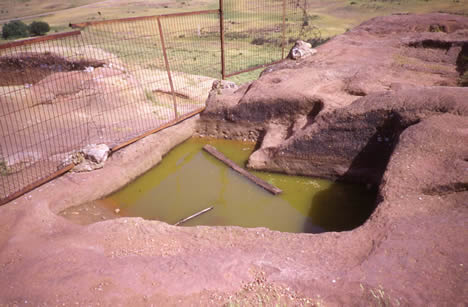
Figure 3
Little remains of public monuments on the site. There are traces of an aqueduct and of the shops and temples around the forum (figure 4). The most conspicuous structure is the tall pillar of masonry rising above the houses (figure 1), which once supported the domed roof of a Roman bath house. A concave slope on the south side of the city is carved with stepped seating. This was once interpreted as a theatre, but is more likely a comitium or public assembly area (figure 5).
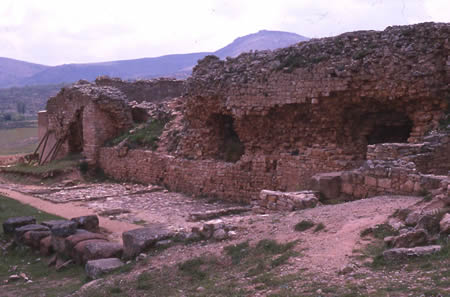
Figure 4
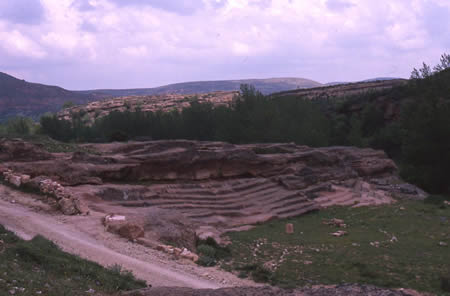
Figure 5